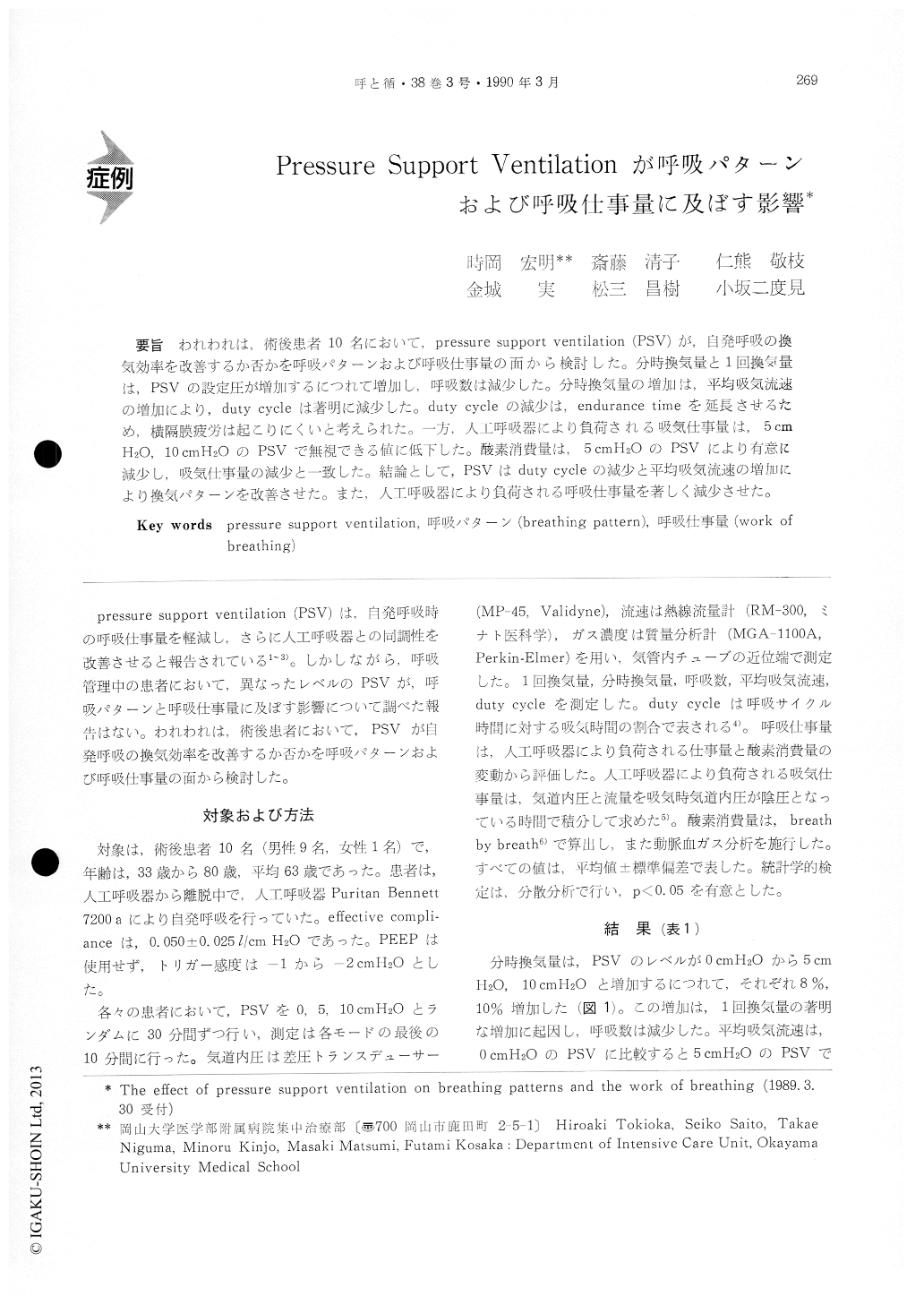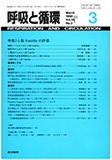Japanese
English
- 有料閲覧
- Abstract 文献概要
- 1ページ目 Look Inside
われわれは,術後患者10名において.pressure support ventilation(PSV)が,自発呼吸の換気効率を改善するか否かを呼吸パターンおよび呼吸仕事量の面から検討した。分時換気量と1回換気量は,PSVの設定圧が増加するにつれて増加し,呼吸数は減少した。分時換気量の増加は,平均吸気流速の増加により,duty cycleは著明に減少した。duty cycleの減少は,endurance timeを延長させるため,横隔膜疲労は起こりにくいと考えられた。一方,人工呼吸器により負荷される吸気仕事量は,5cmH2O,10cmH2OのPSVで無視できる値に低下した。酸素消費展は,5cmH2OのPSVにより有意に減少し,吸気仕事量の減少と一致した。結論として,PSVはduty cycleの減少と平均吸気流速の増加により換気パターンを改善させた。また,人工呼吸器により負荷される呼吸仕事量を著しく減少させた。
We assessed breathing patterns during pressure support ventilation (PSV) and its relationship with the work of breathing in 10 postoperative patients. With increasing levels of pressure support, minute ventilation and tidal volume increased with a de-crease in respiratory frequency. Increased minute ventilation was achieved by increased mean inspira-tory flow. Duty cycle. however, decreased withPSV. This decrease might allow the diaphragm a longer rest period between contractions, which might decrease the risk of diaphragmatic fatigue. Furthermore, PSV reduced the inspiratory work added by a ventilator to near zero. Oxygen con-sumption was also decreased with PSV. We con-clude that PSV improved the breathing patterns and minimized the work of breathing spontaneously via a ventilator.

Copyright © 1990, Igaku-Shoin Ltd. All rights reserved.


